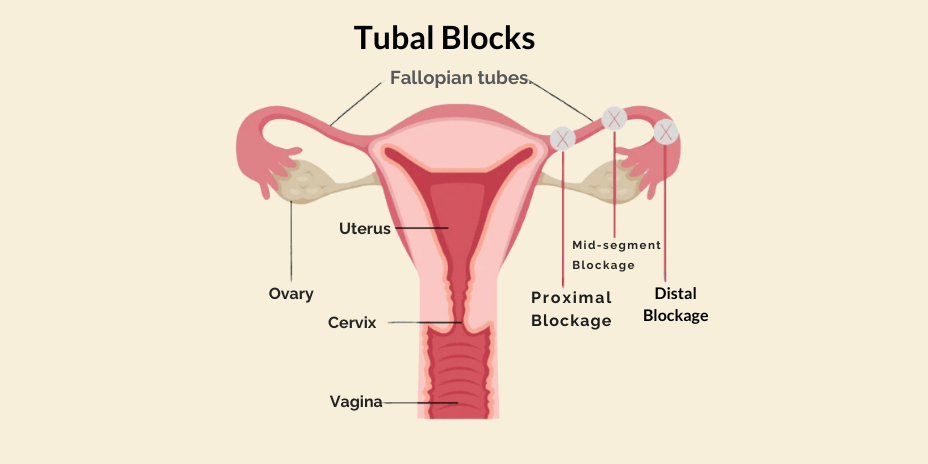
TUBAL BLOCKS
Fallopian tubes are an important part of the female reproductive system. They connect the ovaries to the uterus. Therefore, any blockage in the fallopian tubes can upset the normal functioning of the female reproductive system. The fallopian tubes are responsible for delivering the ovarian egg (ova) to the uterus during pregnancy. Therefore blocked fallopian tubes can cause infertility. Such type of infertility is the cause of 20% infertility in women and is known ad tubal infertility.
RISK FACTORS
The factors which increase the risk of having blocked fallopian tubes are as follows:
- STI : Infections such as Gonorrhea & Chlamydia which are sexually transmitted.
- History of Pelvic Procedures : If one has undergone procedures such as ovarian cyst or fibroid removal surgery, or a previous ectopic pregnancy they are at an increased risk of having blocks in fallopian tubes.
- History of miscarriages : A history of miscarriages is a risk for tubal blocks but such cases are very rare.
- Congenital : Some women have blocked fallopian tubes since birth; in such case the condition is known as congenital tubal obstruction.
SYMPTOMS
Women suffering from blocked fallopian tubes, generally do not experience symptoms except in the case of hydrosalpinx. A hydrosalpinx is a condition wherein the fallopian tubes are blocked, resulting in a collection of fluid.
- Infertility : Infertility is a major symptom of hydrosalpinx.
- Pain & abnormal discharge : Pelvic pain and abnormal vaginal discharge are experienced in some cases.
CAUSES
Pelvic Inflammatory Disease is the major cause of tubal blocks. When bacteria causing sexually transmitted diseases spread to the pelvic area it results in PID.
Other potential causes of blocked fallopian tubes :
- Current or history of an STD infection, specifically Chlamydia or Gonorrhea
- History of uterine infection caused by an abortion or miscarriage
- History of a ruptured appendix
- History of abdominal surgery
- Previous ectopic pregnancy
- Prior surgery involving the fallopian tubes
- Endometriosis
DIAGNOSES
To ascertain tubal blocks, the doctor may recommend sonohysterosalpingography. It is a procedure similar to ultrasound but in this procedure the surgeon also inserts a saline solution into the cavity of the uterus, this helps the doctor to see things which would not be possible with normal ultrasound.
It is important to note that in 15% of the cases the results maybe false positives. Therefore the doctor may perform the test once more.
TREATMENT
Although it is possible to conceive with one functional fallopian tube, the pregnancy rates in such cases are lower. If both the tubes are blocked then a laparoscopic surgery may be performed to free up the fallopian tube. Alternatively assisted conception techniques like IVF may be used,
- Laparoscopy : Laparoscopy is a surgical procedure in which the surgeon accesses the stomach from inside using a small & lighted instrument known as the laparoscope. The laparoscope is inserted through small incisions made near the abdomen area. The size of the incision is around 5-15 millimeters
- IVF : In vitro fertilization is more expensive and invasive then IUI but has a higher success rate. Here the male partner’s sperm and the female partner’s egg are brought together in the lab and the fertilized egg is allowed to grow for 2-3 days after which it is placed in the female partner’s womb.
